How to Improve Your 60 Yard Dash Time
When it comes to the 60 yard dash, you should know… It’s a huge factor in how coaches and scouts judge your athleticism.
I’ll even go so far as to say, it can make or break you.
So, because the 60 yard dash is so important, I figured I’d write up a post on it.
Below, I’m going to share my no nonsense approach to improve your 60 yard dash.
I’ll share the proper 60 yard dash stance, how to transition out of the 60 yard dash stance into a blazing fast sprint, which will result in you shaving time off of your 60 yard dash.
Let’s dive in:
The 60 Yard Dash Stance – Lower Body
The first thing I look at when I want to improve a baseball player’s 60 yard dash is their stance and the takeoff from the stance.
These are the two biggest keys to an impressive 60 yard dash time.
Research has shown that if you start a sprint with the wrong mechanics, you’ll finish with those same faulty mechanics. You can’t change mid sprint. This makes it vitally important to pay attention here and get your start right.
The first step in setting up for your stance is getting relaxed.
Relax the shoulders, the knees a bit, ease into your stance.
From there, make sure you have enough width in the legs. For most baseball athletes, their most efficient width is just outside of shoulder width.

Once you’ve got your leg width set, open your lead leg/hip 45 degrees. A lot of guys have a closed lead leg and that makes for an inefficient start, as it adds an extra step in the transition from stance to acceleration.

In the back leg, you want to have your back heel in line with the middle of your front foot. This means that the back foot is slightly in front of the front foot.
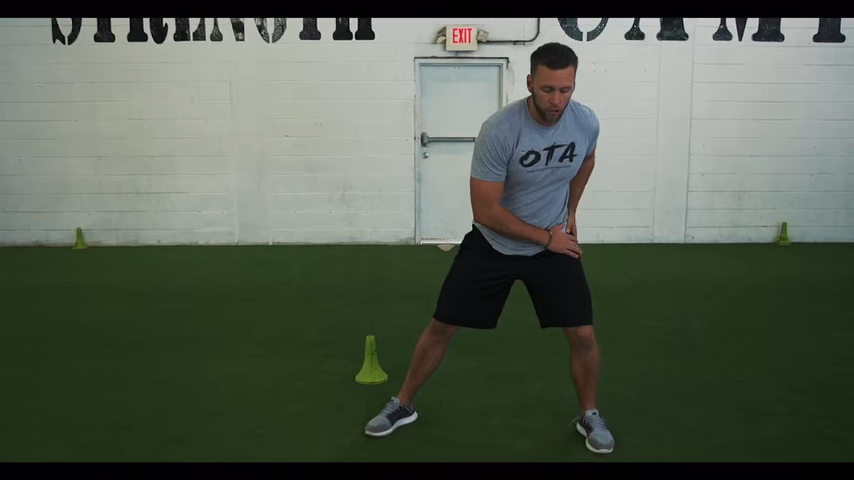
Reason for this is that on your first step out of your 60 stance, you want to bring that bag leg over the front leg. If your feet are in line, it creates inefficiency, as the front leg gets in the way of this process.

Next, you’ll want to load the hips, and even stay a little bit on your heels. Lots of guys like to bring the shoulders over the legs a little bit, which forces them to do a swinging motion as they transition out of their start. This, again, is inefficient, and it will slow you down.
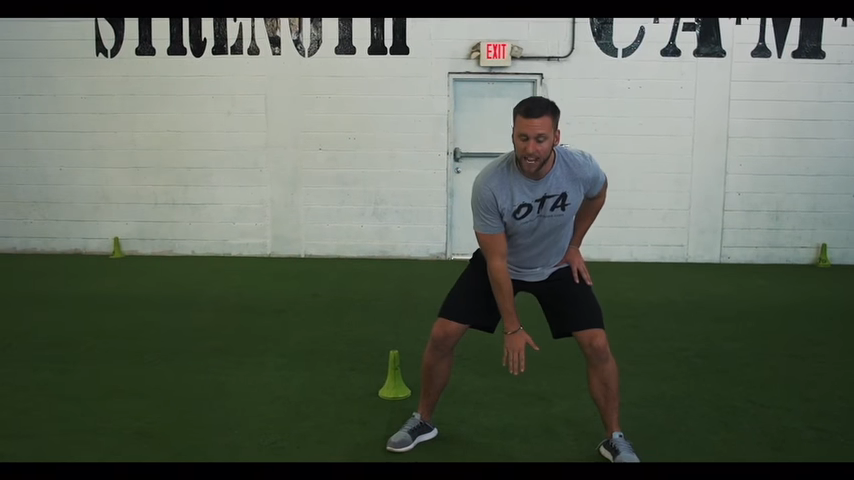
Instead, keep the shoulders right over the knee caps.
The 60 Yard Dash Stance – Upper Body and Weight Distribution
Next, we’re going to get into upper body position.
First is arm placement. As far as arm placement goes, your lead arm (the arm closest to your target destination) should hang down. Keep it relaxed. This is the arm that you will open up with on the start.
Next, you’ll have your back arm bent, with your “hand on the holster”. When I say this, I mean that you should put your hand at the location a holstered gun would be on your leg.

The last thing to account for before the actual start is weight distribution. I like to tell my guys to keep their weight distribution at 40/60. 40 percent on the front leg, 60 on the back.
Why?
Because the majority of your initial power is coming from pushing off that back leg to propel yourself forward. It makes sense that you’d load this leg more.
The 60 Yard Dash Start
Now, we’re moving into the actual start.
This is the transition from the static stance into the acceleration phase, or the phase in which we build speed.
To get into the acceleration phase, we want to get our shoulders out in front, and we want to apply force back into the ground to build as much speed as possible.

Most guys don’t do this.
They pop straight up out of their stance and cycle like they’re riding a bicycle.
Here’s how you can get into an efficient acceleration position.
Out of the stance, the first motion is going to be similar to that of a dive.
I tell my guys “dive into the pool”, which means you get into a position where your shoulders are out in front and you use both of your legs to generate speed as fast as you can.
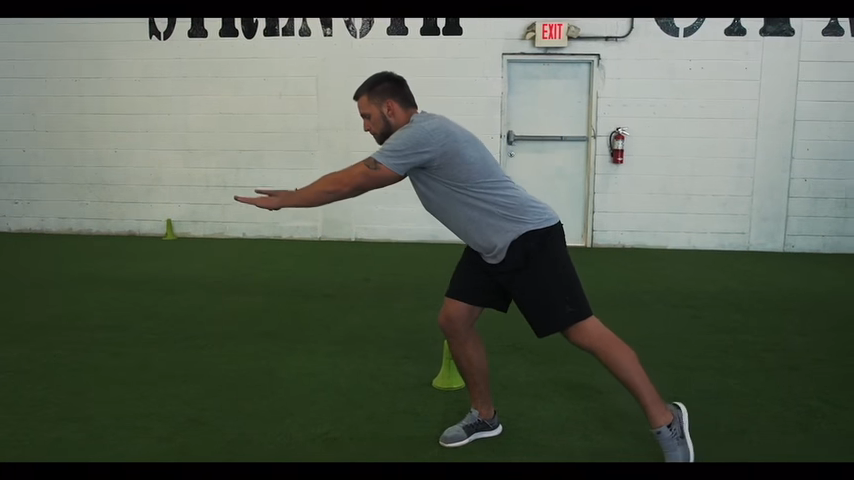
A lot of guys try to use a single leg.
This is a big mistake, because you’re not going to be as explosive out of the gate.
The weight distribution is 60/40 not 100/0. Use two legs.
Now, upon the transition into the acceleration phase, as you “dive into the pool”, your front elbow drives back, and your back arm swings forward. You want to swing that back hand forward as fast as you can to prevent over-rotation.
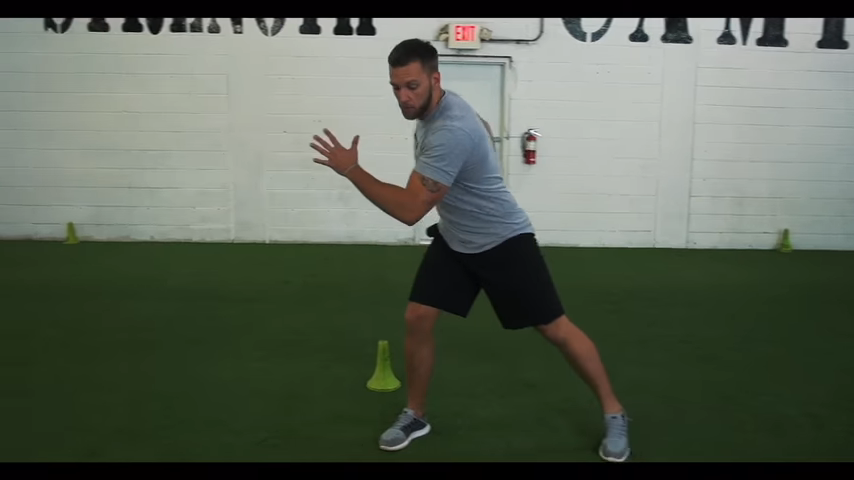
The final point I touch upon with my guys is “trusting their feet”. Whether they’re hitting or stealing a base, I tell them to tuck their chin, and look at their toe over the kneecap.
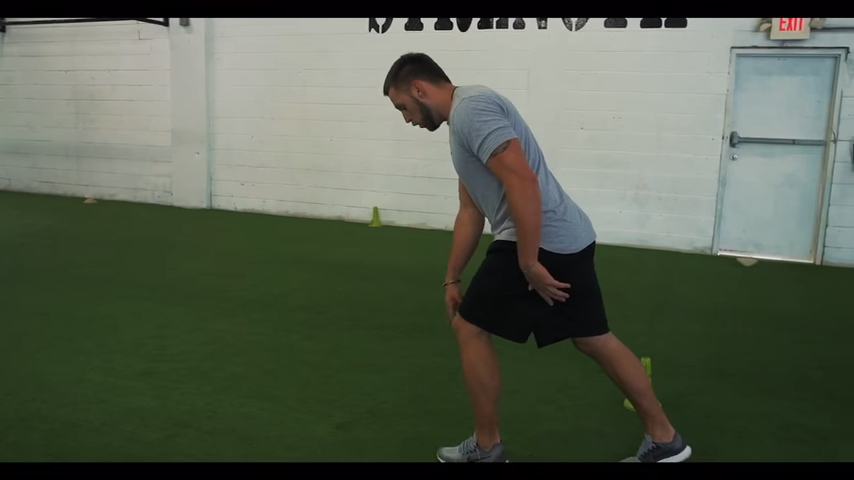
This puts you in the most efficient position to build as much force as much speed as possible, and it prevents them from cycling. Your torso will follow your head. So, if you’re looking straight ahead, your torso will straighten up. If you look at the ground, you’ll be able to keep that forward lean that supports acceleration.
More Baseball Speed Tips
I’ve just shared my complete method to improve your 60 yard dash time.
Yes, I know it was a lot, but your 60 is so crucial to playing college, getting drafted, or rising up in the pros.

And if you can drop your 10 yard dash by correcting your stance, you’ll see that slash your 60 yard dash time.
But, technique is just the tip of the iceberg.
Below that, there’s force production, rate of force development, strength, structural integrity, and more.
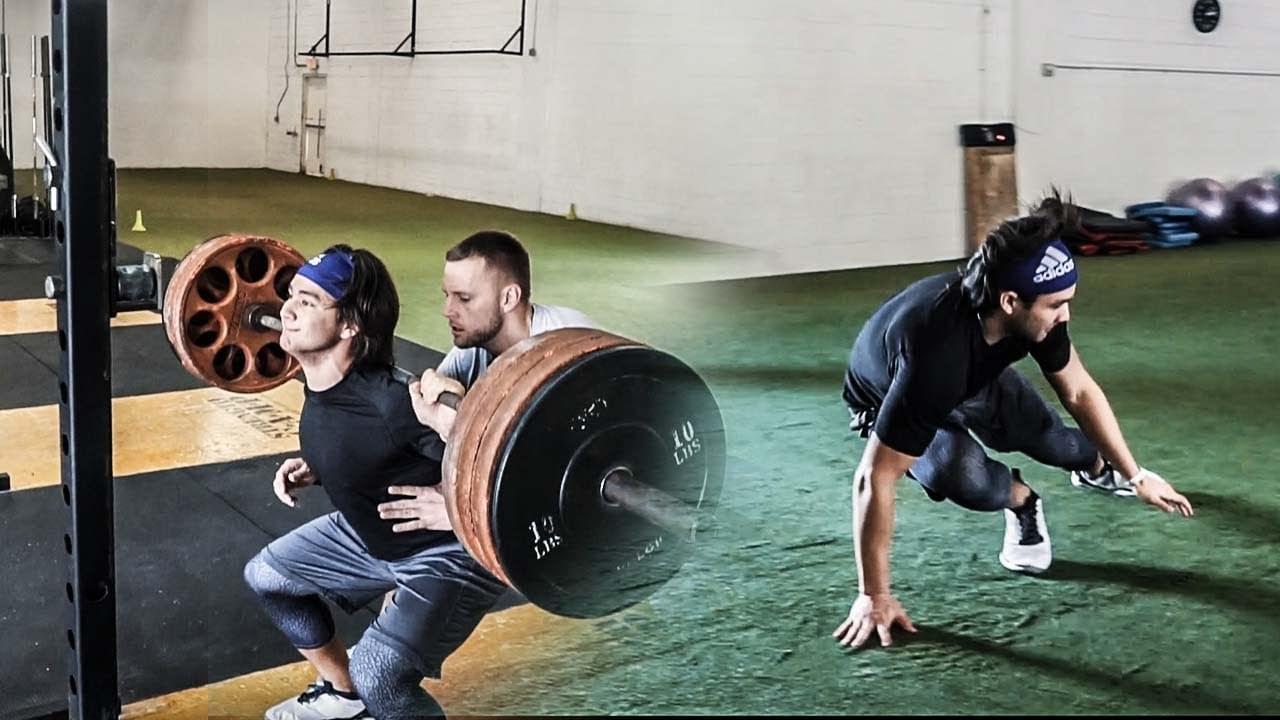
These are all keys to becoming a 5 tool player – a guy who can hit for power, contact hit, play the field, steal bases, and throw.
And inside my Baseball Power Program, I share little-known secrets on how to become that 5 tool guy:
Learn the Secrets to Become a 5 Tool Player